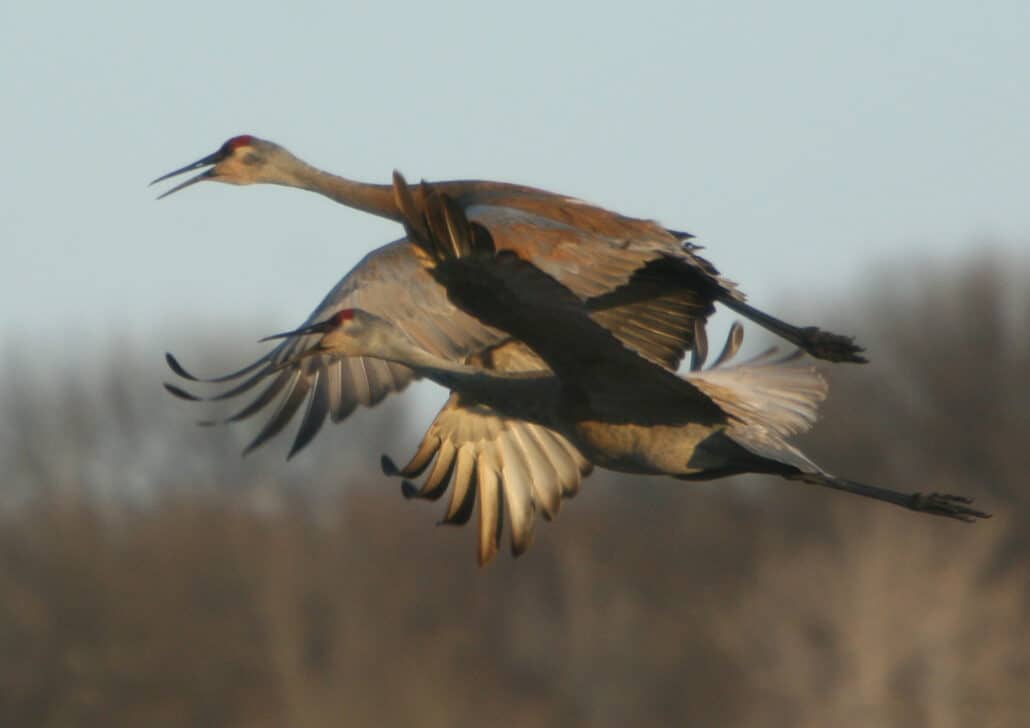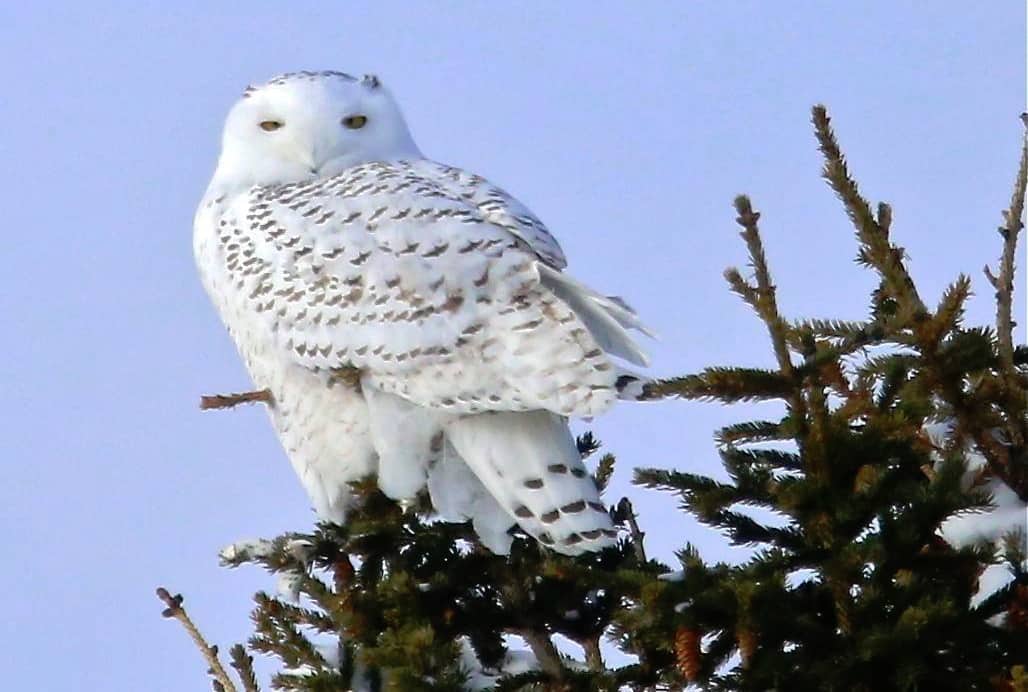Fall birds of Fall (September, October, November)
By August’s end, it’s obvious that summer is not going to last, and we start to see avian signs aplenty of fall’s arrival. Songs of our woodland singers have diminished greatly, and the flora of fall becomes evident. Sunflowers, early asters, cardinal-flower, and many other late bloomers begin to appear on the landscape. One of our latest nesters is in full swing, though —the American goldfinch. These brightly colored and abundant little finches favor the use of thistle down and other late-to-mature plant matter in the construction of their nests, and their activity is still feverish by late summer and early fall.
September brings many changes to Ohio’s bird life, and this month is the peak of fall songbird migration. Even though there are probably more birds passing through the state in fall, as their numbers are augmented by the juveniles, fall passages are much more subtle than in spring. Plumages are muted and generally lacking the festive hues that many warblers and other songbirds sport in spring, and singing is nearly non-existent. The feverish urgency displayed in spring, as migrant songbirds rush to get to the breeding grounds, seems largely absent, too; almost as if the birds are in no hurry to acknowledge the disappearance of summer.
Nevertheless, fall birding can be spectacular, and forces us to ratchet up our skills a notch. All of those birds that were so easily recognized in spring are a bit tougher now that they are no longer bedecked in their fresh breeding plumages. Still, with a bit of practice even those “confusing fall warblers” aren’t too tough. Migration hotspots like Magee Marsh Wildlife Area or Green Lawn Cemetery in Columbus are excellent places to observe fall migrants. On a good day, these sites and others like them can be filled with blackpoll, bay-breasted, Cape May, and yellow-rumped warblers, among others.
A number of species of birds, especially shorebirds, have elliptical migration routes that take them mostly west of Ohio in spring, but right through the Buckeye State in September. If you want to add buff-breasted or Baird’s sandpiper to your life list, you’ll definitely want to go explore Ohio’s fall mudflat scene. Even some songbirds like the Connecticut warbler display similar migration routes and are best seen in this month. The elusive Connecticut warbler is the hardest of our regularly occurring warblers to find, spending much of its time furtively skulking in dense shrubbery, and more than one longtime Ohio birder has yet to add this one to the list.
As September draws to a close, its wise to watch the skies, as hawk migration time arrives. The most dramatic species in terms of numbers are the broad-winged hawks. Forming flocks known as kettles, the peak passage of broad-wings is around the third week of September, and the vicinity of western Lake Erie is the best place to catch big flights. It was in this area that some 20,000 of these birds were seen on September 18th, 2002. While never to be seen in those kinds of numbers, red-tailed, Cooper’s, and sharp-shinned hawks are commonly seen high overhead.
October is the transitional month between fall and winter. This is when the trees turn their vivid hues as the chlorophyll leaches from the leaves, exposing their true colors, and by month’s end many of the leaves have fallen. October also brings our first frosts, and the nip of winter becomes obvious.
If you want to see a migrating golden eagle, park yourself in the heart of the Oak Openings this month, because that’s when and where most of these huge raptors are seen in our state. It’s a good time to look for that medium-sized falcon, the merlin, in wide-open places like Big Island or Killdeer Plains wildlife areas, too.
Birders eagerly rub their hands in anticipation of winter finch invasions, such as evening grosbeak, purple finch, pine siskin, and red and white-winged crossbills. Well, if its going to happen October and November are generally when the first invaders arrive on the scene. While these and other northern irruptives like red-breasted nuthatch and northern saw-whet owl are notoriously cyclical in numbers from year to year, if its jackpot time we’ll usually see plenty of evidence of their presence by now.
Waterfowl begin to stage big movements in our marshes as October fades to November, and perhaps the wild hordes of Canada geese are the most obvious of this group. While not as vociferous as the geese, Ohio marshes become packed with many species of ducks, including northern shoveler, blue-winged and green-winged teal, and northern pintail. Reliable as clockwork, mid to late November brings the flocks of tundra swans, that are best seen as they migrate along the Lake Erie shoreline. Another big, spectacular bird stages flights through western Ohio and even queues up in flocks to roost at favored mudflats, such as at Deer Creek Reservoir, the sandhill crane.
As November winds down, there is no doubt that winter is settling over the land again. We’ve usually had our first taste of snow, and shirtsleeve birding is a thing of the past. The arctic visitors such as rough-legged hawk have returned, and snowy owls will start to be seen in favored Lake Erie haunts. Huge numbers of red-breasted mergansers form flocks so large in the offshore waters of Lake Erie that observers can’t believe their eyes and accurate estimates are nearly impossible. As many as 100,000 of these fish-eaters have been seen flying past one location in 10 minutes! Other hardy diving ducks become common on our great lake in November, too, including canvasback, ruddy duck, bufflehead, and American goldeneye. Constantly whirling overhead are the gulls, which pick up in numbers and diversity as winter sets in. Great black-backed gulls become more numerous, and giant flocks of Bonaparte’s gulls congregate in harbors and river mouths.
It’s high time to have those feeders up and filled, as backyard birds will be eagerly seeking handouts by now. That perennial snowbird, the dark-eyed junco, is back in force, and American tree sparrows have begun to appear. Acclimating your yard birds to the feeders now should insure a steady supply of feathered friends throughout the coming winter.




